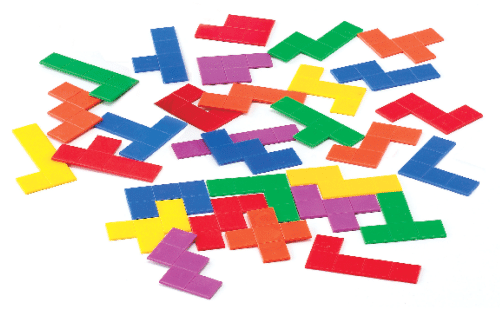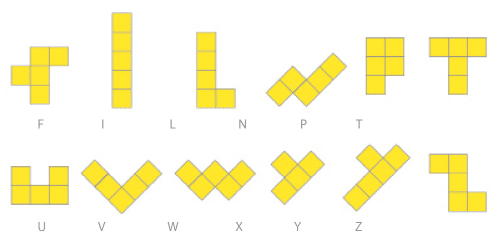• Measurement: Perimeter / Area
• Geometry: Transformations, Symmetry, Geometric Reasoning
Solomon W Colomb is credited with creating and naming Pentominoes in 1953. He wrote a book on Pentominoes in 1965. The name Pentomino literally means five (pent) squares (omino). A domino is made up of two squares, a tromino three squares and so on. The squares must join along an entire edge. This is allowed:

Mathematical Language
Flip (reflect), slide, tessellate, turn (rotate).
Students may notice that some pieces look like letters of the alphabet. Colomb thought so as well and came up with the following naming convention.


Using Pentominoes
Pentominoes are an ideal tool for developing spatial reasoning, learning about tessellating and symmetry, both rotational and line symmetry. Students can learn a valuable lesson about perimeter and area by examining the Pentomino pieces. The area of each piece is five squares, but the perimeter varies, helping to show that perimeter and area are not necessarily linked.
Typical Classroom Requirements
A class set:
Support and Complementary Materials
Grid paper may be used to record/draw any observations made while using Pentominoes. They can record their findings on 10mm, or 20mm grid paper.